How to Change Temperature on Samsung Fridge - A Quick Guide
Table of Contents
Samsung Refrigerator Temperature Setting - Mastering the Basics #
Have you ever been confused by the buttons on your Samsung fridge when it’s too cold? You have company. Today, we’re going to explore how to change the temperature on a Samsung fridge.
Do you ever get frustrated trying to figure out how to adjust the Samsung refrigerator temperature setting? It can be confusing sometimes. Get ready because we’re going to help you become a temperature expert, giving you the ability to control the temperature of your fridge.
Imagine a world where your ice cream is always easy to scoop and your veggies stay fresh for a long time. You can easily learn how to change temperature on samsung fridge with our helpful tips.
Are you ready for an exciting adventure of learning? Come learn how to control the temperature of your Samsung fridge with us. We’ll make it easy for you to understand and become the master of your fridge. Let’s solve those cooling problems!
Understanding Your Samsung Fridge Display #
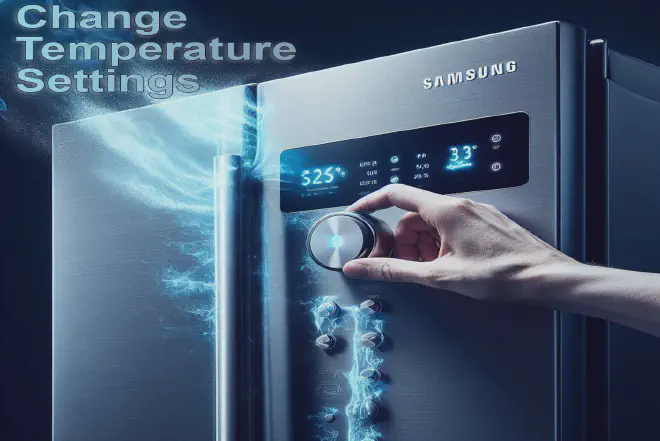
Have you ever been confused by the symbols on your Samsung fridge display? Don’t worry, we’ll explore how to understand and use your appliance in the digital world.
Decoding the Temperature Display Icons #
To start using your Samsung fridge’s temperature control, you need to understand the display icons. To change the temperature on your Samsung fridge, start by looking for symbols that represent the fridge and freezer sections. Find easy-to-understand signs like snowflakes or thermometers that show you the temperature settings.
Knowing these symbols helps you make smart changes based on what you like and what your perishable items need.
Enhancing Your Fridge Mastery #
When you’re learning about your Samsung fridge display, it’s important to understand the basics for the best performance. To easily change the temperature on your Samsung fridge, just get to know the icons and navigate the digital interface with ease. This way, you’ll be in control of the whole process.
Next time you look at your fridge display, you can feel confident because you have control over customising the cooling. Your food will be grateful!
Understanding the Temperature Interface #
If you’re wondering how to change temperature on samsung fridge, just locate the user-friendly temperature control panel. It’s a breeze to tweak the settings to your liking with the digital display that spells out options for both the fridge and freezer compartments
Simple Instructions for How to Change Temperature on Samsung Fridge #
The specific steps on how to change the temperature on a Samsung fridge may vary slightly depending on the model, but the general process is the same. Here are the steps on how to change temperature on Samsung fridge:
Step 1: Switch to control panel #
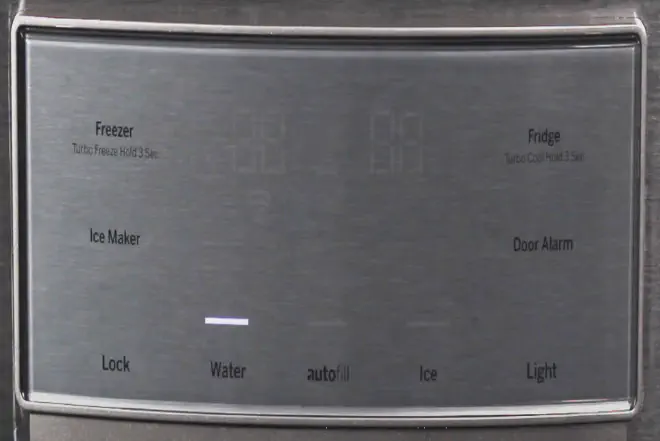
- Locate the temperature control panel. The temperature control panel is usually located on the inside of the refrigerator door, near the top.
Step 2: Select the compartments #
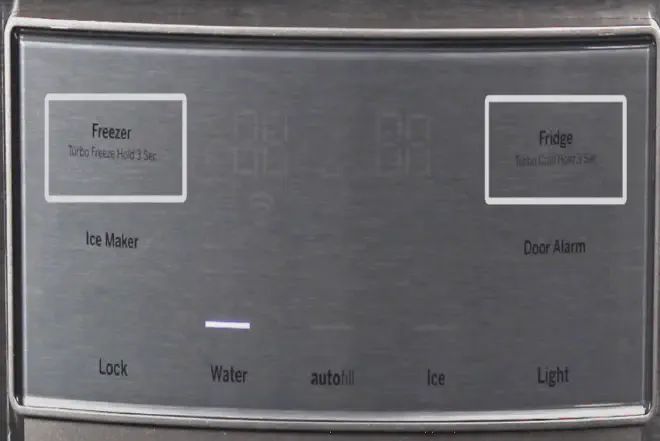
- Press the “Fridge” or “Freezer” button. This will select the compartment you want to adjust the temperature for.
Step 3: Adjust the temperature #
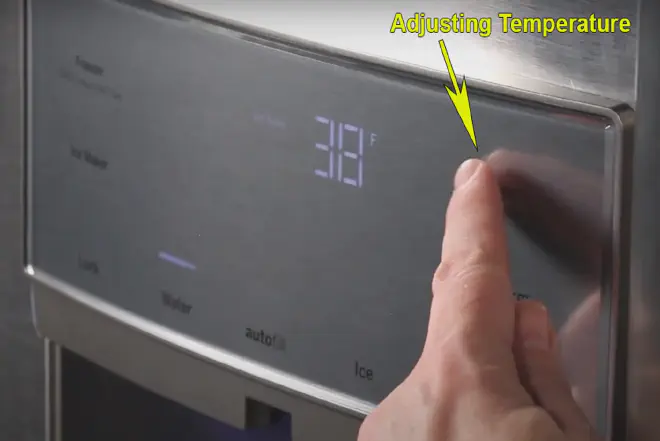
- Use the up or down arrows to adjust the temperature. The current temperature will be displayed on the panel.
Step 4: Finalize your settings #
- Press the “Save” button. This will save the new temperature setting.
Here are some additional tips for how to change temperature on Samsung fridge: #
-
The recommended temperature for the refrigerator is 38°F (3°C).
-
The recommended temperature for the freezer is 0°F (-18°C).
-
If you are storing food that is sensitive to temperature fluctuations, such as eggs or dairy products. you may want to set the temperature a degree or two lower than the recommended setting.
-
If you are not sure what temperature to set your fridge, you can always consult the user manual.
Some helpful tips for Samsung Refrigerator Temperature Settings #
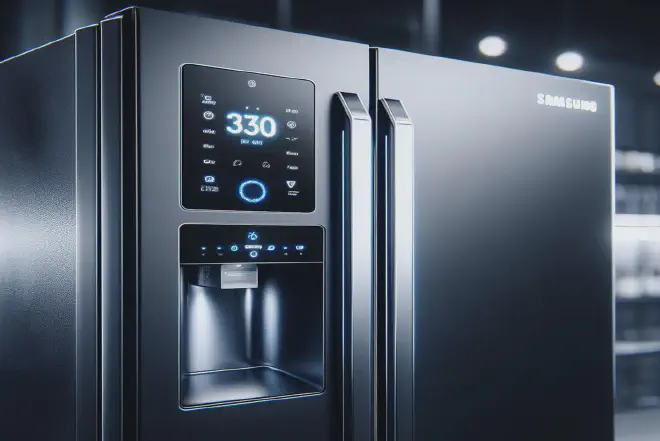
We’re here to help you with all things technology. If you’re a fan of gadgets, you’ll be impressed by the awesome features of your Samsung fridge. It even has a handy guide to help you how to change temperature on samsung fridge! Prepare to be amazed by the awesome features. Let’s share some helpful tips that are perfect for you, the knowledgeable user.
Exploring Smart Features - Releasing the Power of How to Change Temperature on Samsung Fridge #
Get excited about the future with your fridge! Explore the clever features that Samsung has skillfully incorporated. Touchscreens on fridges and app-controlled settings make your fridge a cool addition to your tech-savvy lifestyle. You can easily adjust the Samsung refrigerator temperature setting to fit with your smart home setup. This makes it simpler to control the temperature of your fridge.
Maintenance Tips #
It’s important to take good care of your Samsung fridge so it lasts longer and works well. Regular maintenance is important because it helps the appliance work well and saves energy. Let’s explore some simple tips to keep your refrigerator running smoothly.
Cleaning the Cooling System #
One fundamental aspect of fridge maintenance is keeping the cooling system pristine. Begin by unplugging the appliance and removing any visible dust or debris from the condenser coils. Utilize a gentle brush or a vacuum cleaner with a soft brush attachment to avoid damage. This simple step enhances cooling efficiency and minimizes energy consumption.
Checking Seals and Gaskets #
The door seals and gaskets of your fridge are really important for keeping the temperature just right. Make sure to check these parts often for any signs of damage, like wear, tearing, or if they’re loose. If the seal is not good, it can make the temperature go up and down. This can make your food not stay fresh and use more energy. If you see any problems, make sure to change the seals right away.
Preventive Measures for Longevity #
Make your Samsung fridge last longer by taking some simple steps to prevent problems. To keep your fridge smelling fresh, simply put an open box of baking soda inside. It will absorb any odours and keep the interior nice and clean. Also, make sure to arrange your fridge in a way that allows air to circulate properly. This will help prevent overloading and strain on the compressor. Taking these proactive steps helps maintain good performance and reduces future problems.
By following these maintenance tips, your Samsung fridge will work great and save energy, making it a reliable appliance for your everyday needs. It’s important to regularly check your cooling system, seals, and take preventive measures. This will help improve performance and prevent future problems.
Mastering Your Samsung Fridge Temperature - A Cool Recap #
In this comprehensive guide on how to change temperature on Samsung fridge. We’ve embarked on a journey to empower you as the maestro of your cooling realm. Let’s breeze through the key takeaways that will keep your kitchen chill and your freshness game strong.
First, we learned how to use the controls. Then, we figured out the default settings and adjusted the temperature to match your preferences. Don’t forget, you can get creative with your fridge! You have the power to make it your own. We talked about common problems like uneven cooling and too much frost, and gave solutions to help you keep your fridge working well. If you want to know more than just the basics. We looked into smart features and energy-saving tips to help you get the most out of the advanced capabilities available to you. Make your appliance last longer by following these maintenance tips. Taking care of your seals and condenser coils is important. Just a little bit of attention can make a big difference.
Related Questions of Mastering Samsung Fridge Temperature Settings #
Q: Why is my Samsung fridge not cooling properly? #
A: There are several reasons why your Samsung fridge might not be cooling properly. Some common causes include:
-
Incorrect temperature setting: Ensure the temperature is set to the recommended levels.
-
Dirty condenser coils: The condenser coils help dissipate heat, and if they’re dirty, they can affect cooling efficiency. Clean the coils regularly.
-
Faulty thermostat: The thermostat controls the temperature, and if it’s not working properly, it can cause problems with cooling. If you think your thermostat is broken, call a repair technician.
-
Blocked air vents: can cause problems with cooling because they stop air from moving around properly. Make sure there’s nothing blocking the vents.
-
Door not closing properly: A faulty door seal or a door that doesn’t close properly can allow cold air to escape, leading to cooling problems. Check the door seal and ensure it’s intact and making a proper seal.
Q: What should I do if I notice uneven cooling in different sections of my Samsung fridge? #
A: To fix uneven cooling, you need to understand and balance the temperature zones. Take a look at the “Troubleshooting Temperature Woes” section for helpful tips on keeping your fridge cool and consistent.
Q: How can I prevent my food from freezing in the fridge compartment? #
A: If you notice food freezing in the fridge compartment, it’s likely because the temperature is set too low. Increase the temperature slightly to prevent freezing.
Q: How often should I conduct maintenance on my Samsung fridge to ensure optimal performance? #
A: It’s really important to do regular maintenance on your fridge so it keeps working well for a long time.
Q: Can adjusting the temperature of my Samsung fridge contribute to energy savings? #
A: Yes! The article talks about ways to save energy in the “Your Cooling Arsenal: Smart Features Explored” section. Learn how adjusting your temperature settings can help you keep your food fresh while saving energy.